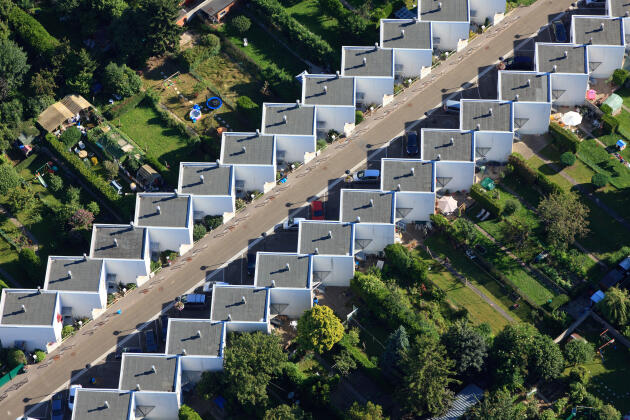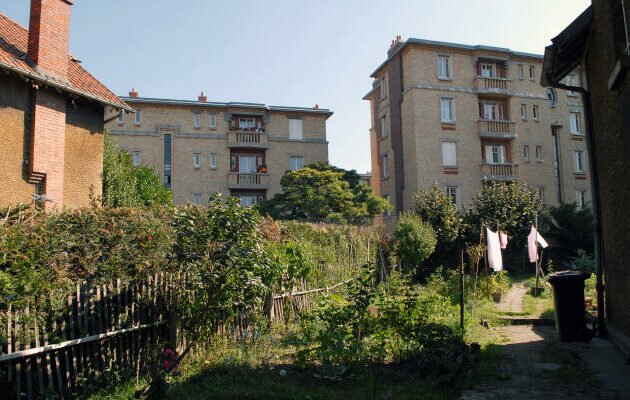THE MORNING LIST
Combining the advantages of the city and those of the countryside: it is on this model that garden cities were born in England in the 19th century.e century. In France, social housing between the wars was inspired by it.
In Stains, the countryside in the heart of the city
To join the Biodiversity Festival organized by the municipality of Stains (Seine-Saint-Denis), you will need this Saturday 1er June, slip between n° 48 and n° 50 of rue Raoul-Duchêne. “It’s a bit Harry Potter!” “, laughs Noémie Maurin-Gaisne, coordinator of theRegional association of garden cities of Ile-de-France and Stains specialist. The corner of greenery which is then offered, at the rear of the buildings, is characteristic of the group of 1,640 collective housing units and 472 suburban housing units built between 1922 and 1933.
It is one of the seven “block hearts”, open and planted spaces, which, with the allotment gardens, the flower beds and the numerous trees, give life in the city this countryside feel in the city. , thought out from its conception. “Each home had to have rapid access to air, light and nature, for the sake of nourishment and hygiene”, explains Noémie Maurin-Gaisne. The design of traffic routes contributes to the quality of life. Wide straight avenues radiate from the central square. But, on both sides, certain streets become curved, “to avoid monotony and resemble the layout of a village, and it still works today! “, she specifies.
In Trappes, a railway story

The railway workers’ pavilions in Trappes (Yvelines) have not aged a bit! Cubic, coated in white, with a flat roof, the forty housing units, arranged obliquely on either side of Avenue Marceau, display the resolutely modern style desired by their architects, the Guttons father and son, in 1931 , for this garden city called Les Dents de saw. At the time, the Trappes marshalling yard and depot formed one of the most important railway centers in France. Employees from Brittany, Normandy, Vendée, Sarthe and Charente must be accommodated. “The neighborhood lived to the rhythm of these locomotives, steam monsters that could be heard everywhere”notes Anissa Lamri, head of municipal archives.
You have 65.97% of this article left to read. The rest is reserved for subscribers.
